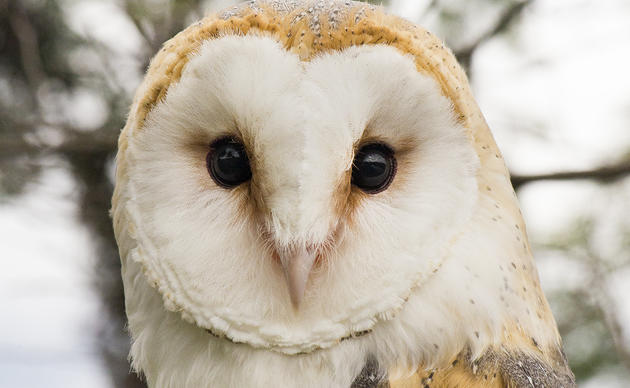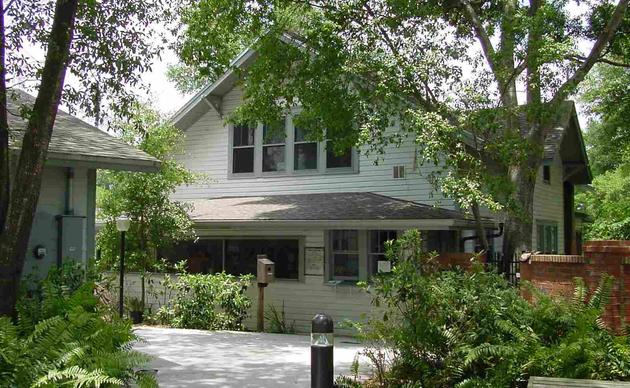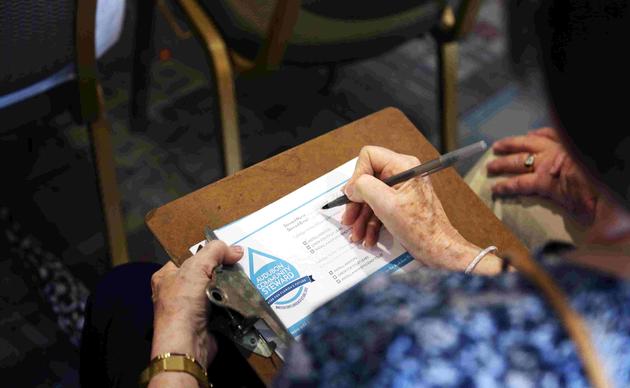In the 1940s, a new insecticide hit the market. DDT - one of the very first synthetic insecticides - proved to be effective but deadly not only to insects, but to fish and amphibians, as well as the mammals and birds that preyed upon them. By the 1960s and 1970s, Bald Eagle numbers plummeted. The DDT-loaded fish the eagles consumed thinned their eggshells, resulting in nest failure. In 1972, only 88 Bald Eagle nests existed in Florida. Although DDT was banned in 1972, Bald Eagles were slow to recover and remained critically endangered for decades.
Fast forward to 1986. Fewer than 400 Bald Eagle nests existed in the entire state of Florida. In one nest that year, an imperfect eaglet hatched. No one could have predicted the extent to which this small creature would touch thousands of lives.
A Choppy Start to Life
I met this imperfect eagle on my first day as the Senior Coordinator of Education here at the Center for Birds of Prey, and immediately I learned we had something in common. I was born with a condition known as a crooked jaw. My upper and lower mandibles were misaligned, causing problems in both speech and my ability to eat. At the age of six, I had a large, painful orthodontic device installed in my mouth to fix this issue.
Bald Eagles can have a similar congenital defect called a scissor beak. In this malformation, the upper and lower beak do not align, causing issues with eating and drinking. The eaglet of our story hatched with a scissor beak. Today, an eaglet with a natural condition like this would usually be left alone — the job of a wildlife rehabilitator is not to interfere with nature, but to help when humans are the cause of animal injury and illness. But in 1986, every single eaglet was crucial for the species' recovery. So when a wildlife photographer happened upon the eaglet in a nest, the Florida Fish and Wildlife Conservation Commission allowed the removal of this eaglet to fix his beak and give him a chance at life.
That’s how he arrived at the Audubon Center for Birds of Prey — with a little bit of an imperfection and a lot of attitude. In cooperation with Winter Park Veterinary Hospital, Raptor Trauma Clinic staff tried multiple times to correct his beak. Unlike a crooked jaw, a beak is not a bone. It is made of keratin, like our hair and nails, and grows continuously. Each time the beak was corrected, it grew right back...incorrectly. In order to feed the eaglet, staff had to prepare a special diet of liquid fish slurries. All this work and difficulty provided the eaglet his name: Trouble.
Trouble Finds His Calling
When it became clear the beak could not be fixed, staff made the decision to keep Trouble at the Audubon Center for Birds of Prey as an ambassador. So began his career as an educator. I’ve often found, in my 12 or so years of teaching people about animals and nature, that while it can be difficult to change minds and hearts with straight facts, a good story can change the world. Trouble had the best story. He was the little eagle who made it, despite the odds and his slight imperfection. He had an impressively big wingspan and an even bigger personality. He was a feisty eagle who enjoyed testing his handlers, and an easygoing ambassador who would sit still for awestruck groups of children and adults.
Trouble visited countless schools, libraries, and nature centers throughout his time as an ambassador, and it's not an exaggeration to say that through Trouble, tens of thousands of people learned about water conservation, nature, and the importance of our voices as consumers. After 36 years of educating, he touched a lot of lives.
An Ambassador's Influence
Trouble’s impact is best reflected in the adults who come through the Center with their kids. “Is Trouble here?" visitors stop me and ask. "I met him when I was a kid, and now I’m here with my child.” Not many Bald Eagles have raised generations of birders. Trouble has.
David Fitzpatrick was 17 years old when he visited the Center and met Trouble up close on a handler’s glove. David was so enchanted by the bird that on his 18th birthday, he arrived at the Center ready to volunteer. After a few years of volunteering, David joined the Center for Birds of Prey staff as a Raptor Care Assistant in February 2022.
Eventually, Trouble retired from offsite programs, but his public life continued in the Center's garden. From his low perch, he welcomed guests with his yells, flaps, and frequent baths. Before guests had even reached the ticket window, he was enchanting them with his antics.
We Conserve Only What We Love
In Trouble's 37 years, his species saw tremendous recovery. As more people became aware of the plight of our nation’s symbol, and more support was found for the protection of the species, the Bald Eagle population grew. In Florida in 2022, there were around 2,500 nesting pairs of Bald Eagles — a count that soars above the 400 nests in the state when Trouble hatched. At a time when Florida's ecosystems needed protection, Trouble inspired employees, volunteers, and two generations of the public to action. Birds like Trouble can evoke a sense of wonder about their species and the natural world. As Baba Dioum, founding member of the International Union for the Conservation of Nature, once said: We conserve only what we love.
I believe that in our lives we cross paths with a number of beings, not all human, that change us and teach us lessons we need to learn. These lessons make us better. Trouble was one of these beings for nearly everyone who met him. He taught me to embrace every imperfection; it’s often what makes you wonderful. He taught me that when it rains, it’s time to hop in the bath. You’re already wet, so you might as well go for it and have a good time. He also taught me the power of a nice, cathartic scream.
Most of all, Trouble taught me that a single animal can make a crucial difference. In Florida, Bald Eagles went from 400 nesting pairs to 2,500 in his lifetime. I believe Trouble had a hand, or a talon, in the recovery of his species. For the humans whose lives he touched, he directed careers, passions, and goals. In the end, he was no Trouble at all.
Daisy Fiore, PhD is the Senior Coordinator for Education at the Audubon Center for Birds of Prey.




